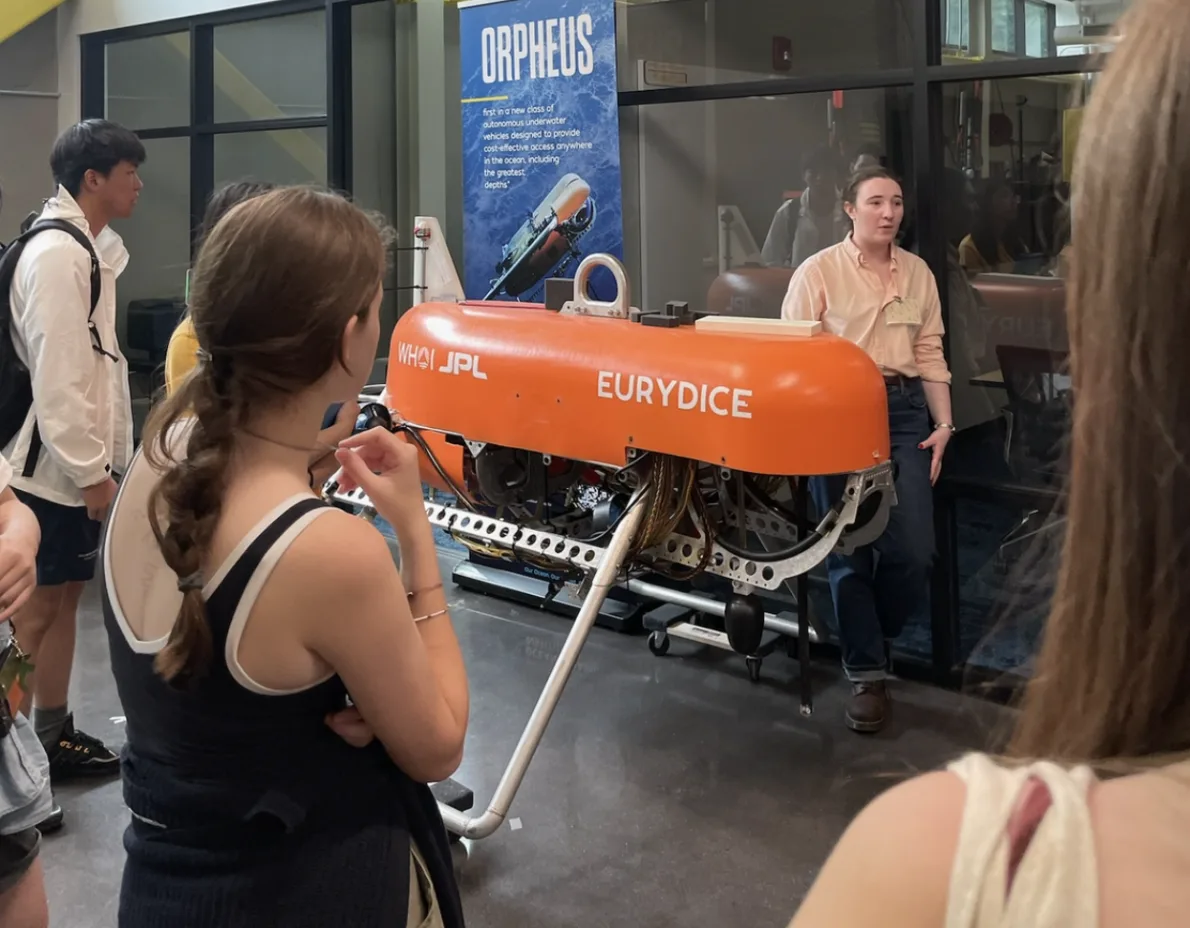Programs Blog
A Visit to Quissett

July 1, 2025
Author: Nate Diehn
Today started out like most days, with everyone making their preferred breakfast, and leaving for class at 9:00. I just had a slice of banana bread, but some people made more. Then at around 9:10 a guest speaker named Greg came in to teach about Physical Oceanography, which is the study of the ocean’s physical properties such as tides and currents. The main lesson was about the coriolis effect, which describes the way things move in relation to spinning objects. Since the earth is, of course, spinning, we mainly focused on how it affects the oceans’ water and its movement. It was a pretty interesting lesson and a good way to introduce the subject.
After the lecture, we went down for lunch. Connor, and Auggie made some quesadillas, a few of which ended up a little burnt. Next, instead of an afternoon class, we had a tour of the WHOI Quissett Campus. This tour was very interesting, as we got to see a lot of different buildings, relating to different jobs. First we looked at the main place where robotic things are made and tested. We saw a vehicle used for getting data deep in the ocean where there’s no light. Later we saw footage from it which had a bunch of cool creatures, including a lantern fish. Next we went to a room with a bunch of 3D prints, and the guide explained the unique printing process the campus uses for printing their complex parts. We also got to control a robot live, and swim it around a tank of freshwater. We then went to another building where they did necropsy (like an autopsy but on a dead animal) on various marine animals. We also got to go in the freezer where they stored the animals for research. It was -20℃ in there, which meant everyone was shivering the whole time. We saw a dead seal, dolphin, and even a Siberian tiger head. After that we went to another building where we learned about how they tag animals to get data on them. We also learned how they do research with sounds, such as playing sounds of a live coral reef to try to restore it. We also got to see the Core Library, which had various sediment cores from the sea floor, rocks, and coral. The guide explained to us how they get data from them, and showed us the room where they get CT scans of the samples. After the tour we played some beach volleyball and tennis at the nearby courts.
Once the tour was over, we got back to the cabins and made some honey and garlic chicken for dinner, and got told our teams for the upcoming color wars. Then, we tie dyed socks our team colors. Me and Brandon later learned you were supposed to do it on the ground, not your hand. After we were finished tie dyeing our socks (and for some of us our hands) we got ready for bed and went to sleep.
Recent Posts from the Ships
- Ocean Classroom 2024-A collaborative high school program with Proctor Academy
- Collaborations and Long-term Commitments: SEA’s Caribbean Reef Program Sets a Course for Coastal Programs that Compliment Shipboard Experiences.
- Sea Education Association students prepare for life underway using state of the art nautical simulation from Wartsila Corporation.
- SEA Writer 2022, Magazines From the Summer SEA Quest Students
- Technology@SEA: Upgrades Allow Insight into Ocean Depths
Programs
- Gap Year
- Ocean Exploration
- High School
- Science at SEA
- SEA Expedition
- SEAScape
- Pre-College
- Proctor Ocean Classroom
- Protecting the Phoenix Islands
- SPICE
- Stanford@SEA
- Undergraduate
- Climate and Society
- Climate Change and Coastal Resilience
- Coral Reef Conservation
- Marine Biodiversity and Conservation
- MBL
- Ocean Exploration: Plastics
- Ocean Policy: Marine Protected Areas
- Oceans and Climate
- Pacific Reef Expedition
- The Global Ocean: Hawai'i
- The Global Ocean: New Zealand